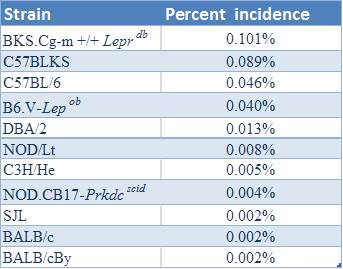If you work with laboratory rodents long enough, the odds are good that you will encounter malocclusion in some of your mice. In fact, about 0.05% of C57BL/6J mice develop this condition. As a result, mice with malocclusion may be smaller and appear less fit than cage mates. Dental malocclusion in rodents is the improper alignment of the teeth. Normally, their teeth are ground down through contact with other teeth. But, if their jaw is misaligned, the teeth will overgrow and the animal will have difficulty eating.
What is malocclusion?
Malocclusion is a common disorder of many strains of laboratory mice and is readily diagnosed by a simple oral examination. Malocclusion occurs in mice when the incisors overgrow because their jaw is misaligned. Therefore, the mandibular and maxillary teeth do not properly occlude. The the best way to detect malocclusion is to examine the mouse’s mouse.
Why are mice prone to malocclusion?
Rodents are especially prone to malocclusion since their incisors, or long front teeth, have open roots and continue to grow throughout the animal's life. A mouse must gnaw or chew enough to wear down the incisors and keep them from becoming overgrown. In the wild, rodent teeth wear naturally through the consumption of hard foodstuffs and gnawing behavior. In the laboratory, these conditions are mimicked by providing the animals with rodent chow formulated to be hard enough to wear the teeth.
Growing incisors
The mouse incisor is composed mainly of dentin, with enamel formed only on the labial surface of the tooth. As the tooth wears, the pulp cells produce more dentin so that the pulp of the tooth, where the nerves reside, is never exposed. Eruption of the incisors in young mice occurs between days 10-12 of age. In mice, the normal rate of eruption (which equals the rate of wear, so that the incisors remain a constant size in adult mice) is approximately 2mm/week for the upper incisors and 2.8mm/week for the lower incisors. This results in a turnover of the entire tooth in 35-45 days. If teeth are damaged, the rate of growth may increase.
Which factors influence the occurrence of malocclusion?
1. Trauma: In mice, malocclusion of both the incisors and the rooted molars has been linked to trauma to developing teeth. This condition can develop due to blunt trauma caused by contact with cage lids and food that is too hard. Such trauma can also be inflicted by improper handling and fighting with cage mates.

2. Genetic background: A genetic basis for some cases of malocclusion is suggested by an increased incidence in certain strains.
3. Genetic mutations: Some mutations are known to cause malocclusion as well.
When is it too late to diagnose malocclusion?
The diagnosis of malocclusion is often delayed until the mouse is permanently impaired from the malnourishment that attends the condition. Undiagnosed or untreated malocclusion may also result in oral and facial abscesses and osteomyelitis as the growing teeth penetrate facial structures.
How to manage malocclusion
Malocclusion should be the first disorder suspected when a mouse is smaller and thinner than its littermates at weaning. The standard recommendation for mice with malocclusion found at weaning is euthanasia. When the malocclusion is later in onset and due to trauma, oral tumor formation, or other causes, it is possible to manage the treatment of a valuable mouse through a program of regular tooth trimming using blunt-tipped scissors, to prevent inadvertent oral trauma, and adding a provision of powdered diet. Since the pulp is not exposed in mice, tooth trimming is not painful, although the intensive management and handling necessary to implement a tooth-trimming program may be stressful to the animals. When designing a tooth-trimming regimen, remember that the rapid rate of growth of the incisors must be considered.